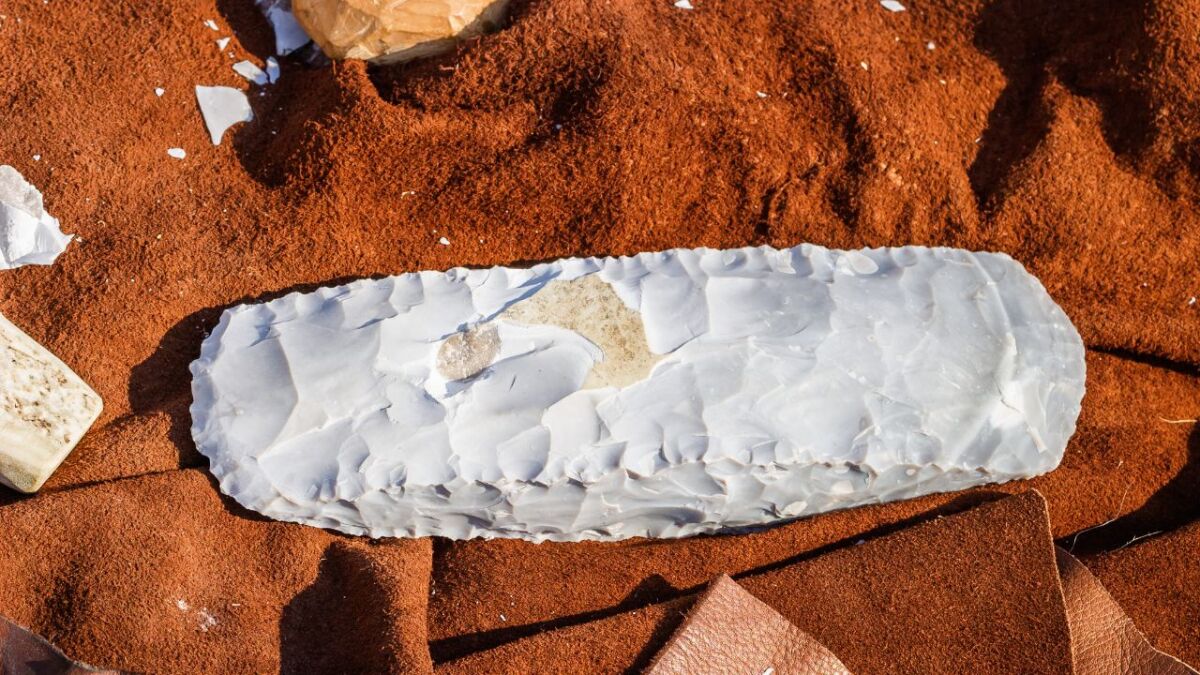
The Flintstone - Ancient tool of our ancestors (Origin, Fire making, Locations)
👉 The key facts from this guide
- Flint is a hard and brittle mineral, ideal for sharp-edged tools and weapons.
- It is formed through deposits on the seafloor over millions of years.
- Flint occurs all over the world and has been used by our ancestors in the Paleolithic and Neolithic periods.
- Flint can generate sparks, but they are too cold to ignite a fire. However, it can be used with pyrite or steel to strike hot sparks.
- It was a valuable commodity in the Stone Age and is also used in jewelry production today.
- Flint is found worldwide, but particularly common in Europe.
- You can find flint yourself by searching at chalk cliffs or in quarries.
Imagine you are walking along the riverbed and find a strange gray stone on the ground.
Maybe you're wondering what this is?
Well, it could be a flint, a stone that played a key role for our ancestors thousands of years ago.
In this article, you will explore the fascinating world of flint with me.
Because this stone is simply brilliant and incredibly versatile!
We will look at how this stone was formed, what it was used for, and also how to make fire with it.
So unleash your spirit of discovery and let's get started!
What is Flint?
Flint, also known as Feuerstein or Silex, is a variety of the mineral quartz that is particularly hard and brittle. Unlike ordinary quartz, flint contains almost 100% pure silicon dioxide (SiO2). As a result, it splinters very sharply when struck. This characteristic made it an ideal tool and weapon material for our early ancestors.
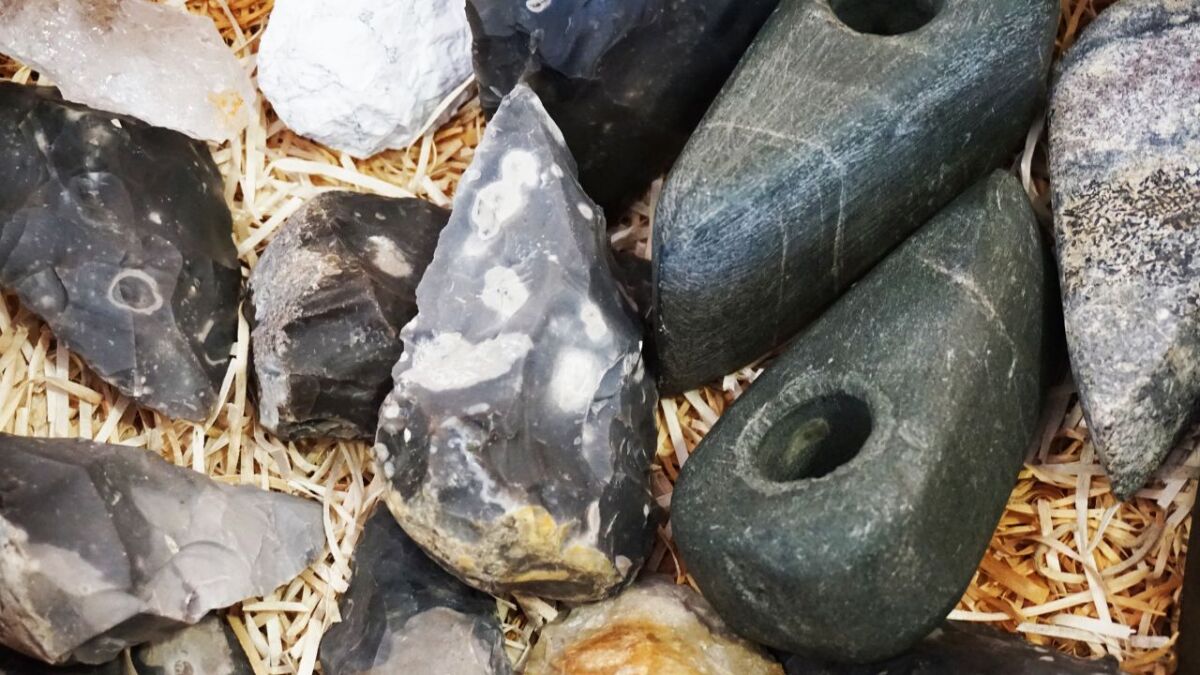
Flint occurs all over the world, but is particularly common in Europe.
One can find it in many colors, from gray to brown to black or even yellow. Depending on the place of discovery, the color can vary.
How is flint formed?
Flint is a sedimentary rock. This means that it was formed by the deposition of material on the ocean floor over millions of years.
The exact formation of flint can vary from place to place, but in general, it forms from the remains of diatoms in marine deposits over a long period of time.
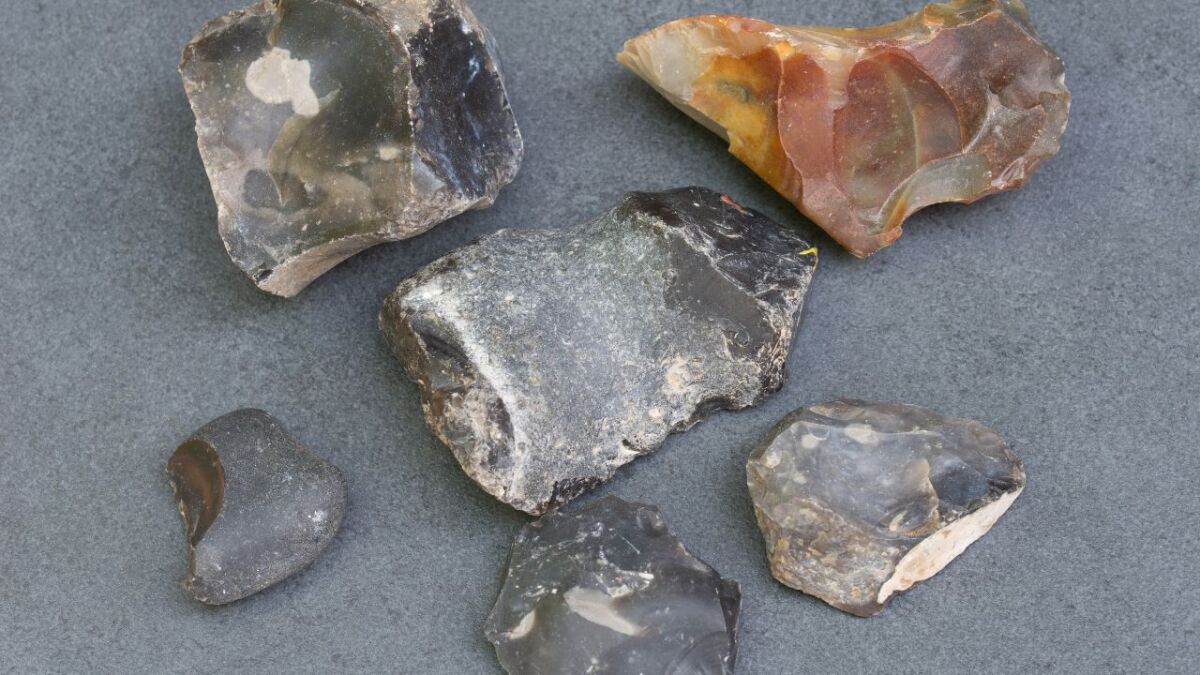
The formation of flint occurs in several stages. Here are some important pieces of information about the formation of flint:
- Flint forms from dissolved skeletal remains of diatoms containing silica or silicic acid
- Over millions of years, the skeletal remains concentrated on the seabed. Over time, these silica deposits compacted into solid rock, namely flint.
- Most flint deposits were formed in marine deposits of the Cretaceous, Jurassic, or Tertiary periods
- Flint deposits are located worldwide near the coast, but some flints can also be found far inland along the so-called flint line
- The flint line is bounded by the German Central Uplands and indicates the furthest glacial advance during the Ice Age
One often finds flint in chalk and limestone formations.
These rocks were formed at the same time as flint, when Europe was still covered by the sea. So if you find a flint, you know that there used to be a shallow sea here in ancient times.
Below the image you can see chalk and limestone rocks - there used to be a sea here.
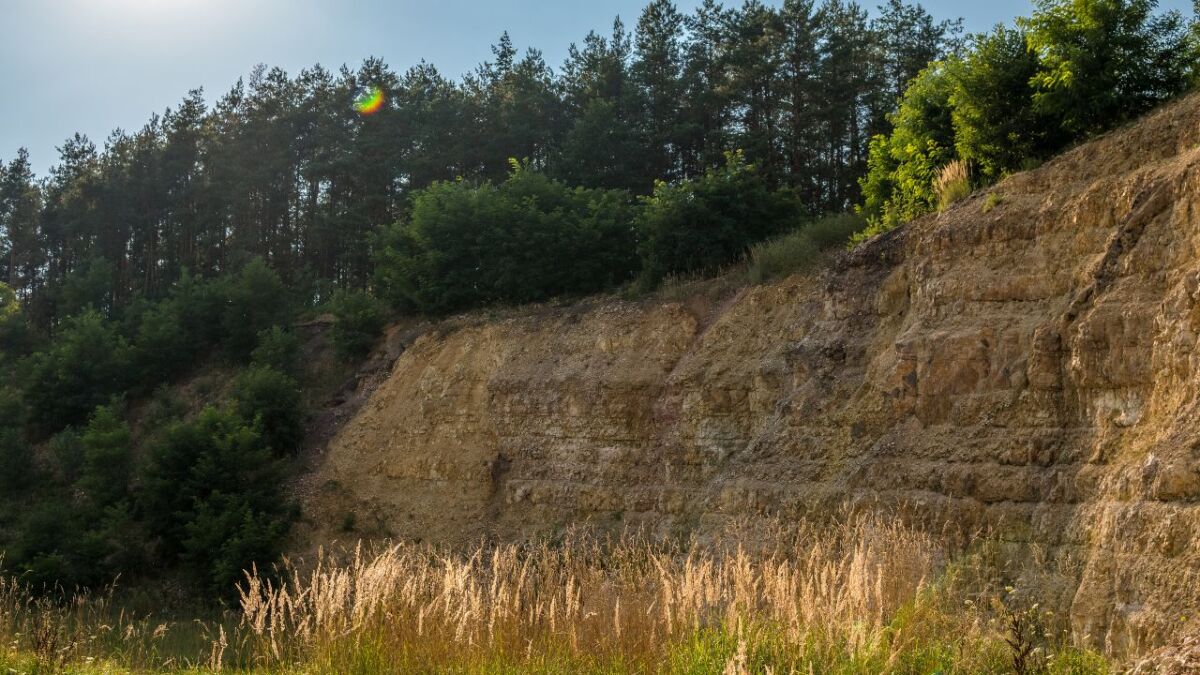
What are the properties of flint?
Flint has various properties that make it a unique rock. Here are some of the key properties of flint:
- Hardness: Flint has a hardness of 6.5 to 7 on the Mohs scale (values range from 1 to 10, with gypsum at 2 and diamond at 10). This means that it is relatively hard. This hardness makes it resistant to wear and allows it to maintain sharp edges.
- Microcrystalline structure: Flint has a microcrystalline structure, which means that its crystals are so small that they cannot be seen with the naked eye. This structure gives flint its characteristic smooth surface.
- Cleavage: Flint has good cleavage, which means that it can be easily split in certain directions. This allowed people in the Stone Age to work flint and make tools out of it.
- Fire production: Flint has the remarkable property of producing sparks when struck against other stones due to its hardness. Pyrite or Markasit is used for this purpose. These sparks (from the pyrite, not the flint!) can be used to ignite fire when combined with tinder and dry material.
- Uses: Due to its hardness, cleavage, and sharp edges, flint was a valuable material for making tools such as knives, arrowheads, and scrapers in the Stone Age. Today, flint is also used in jewelry making and as a decorative stone.
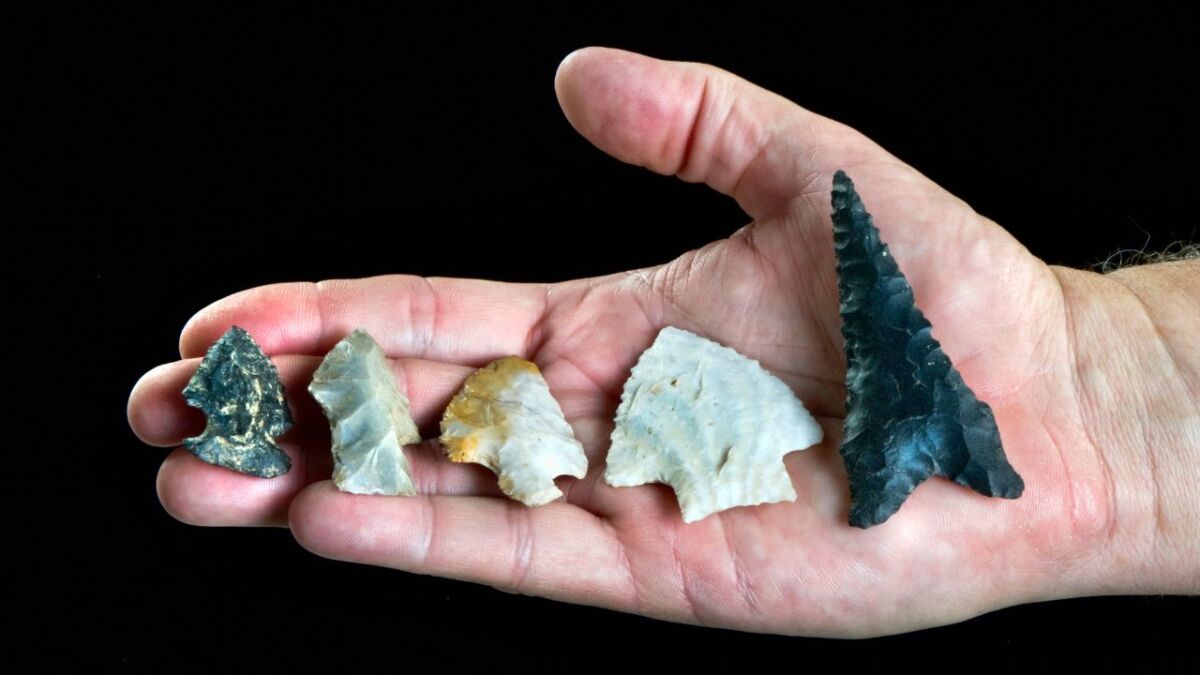
The Flint in the Stone Age
The fact is: The flint was indispensable for our ancestors in the Old and New Stone Age.
With its hard and splintered texture, the material was ideal for making sharp blades and points out of it.
The people of the Stone Age used flint to:
- Producing knives, spearheads, and arrowheads
- Creating scrapers and scratchers for working with hides and wood
- Manufacturing saws and drills for cutting and making holes
In short, flint could be used for almost any tool or weapon.
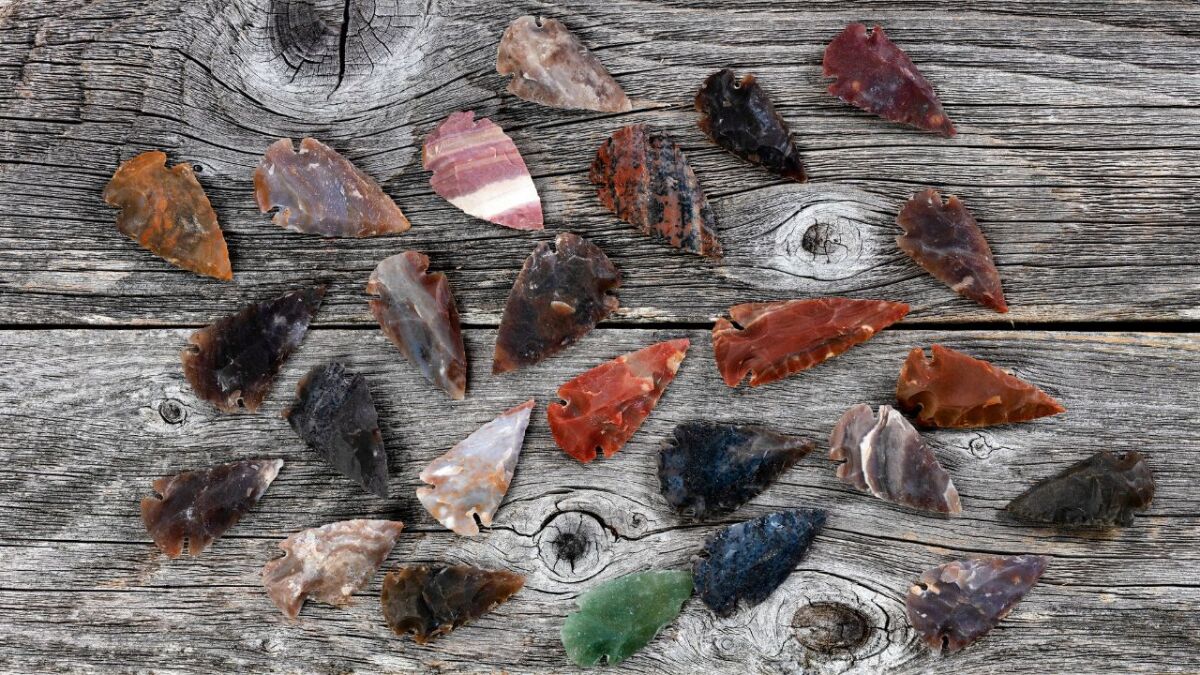
Evidence indicates that humans have been using stone for over 2 million years.
Flint was one of the oldest tools of humanity.
Flint was already a valuable commodity for our ancestors.
At sites far from flint quarries, one often finds axes and blades made of flint that were transported hundreds of kilometers.
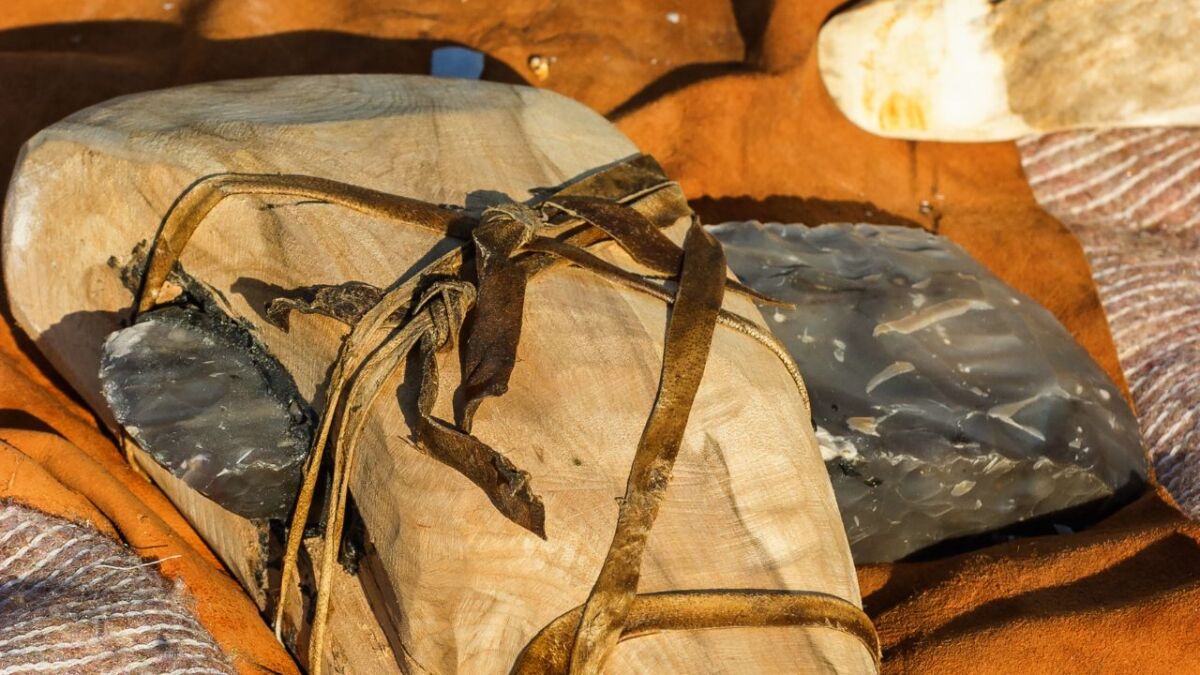
The technique of flintknapping
The processing of flint was an art that was refined over generations.
In ancient times, people searched for visible occurrences of flint on the surface of the earth or dug in shallow pits to access the valuable stone.
The technique involved hitting the stone with a harder object, typically a hammer stone, to create sharp edges and tool shapes.
These shards were then worked into arrowheads, for example by pressing them with a point made of antler.
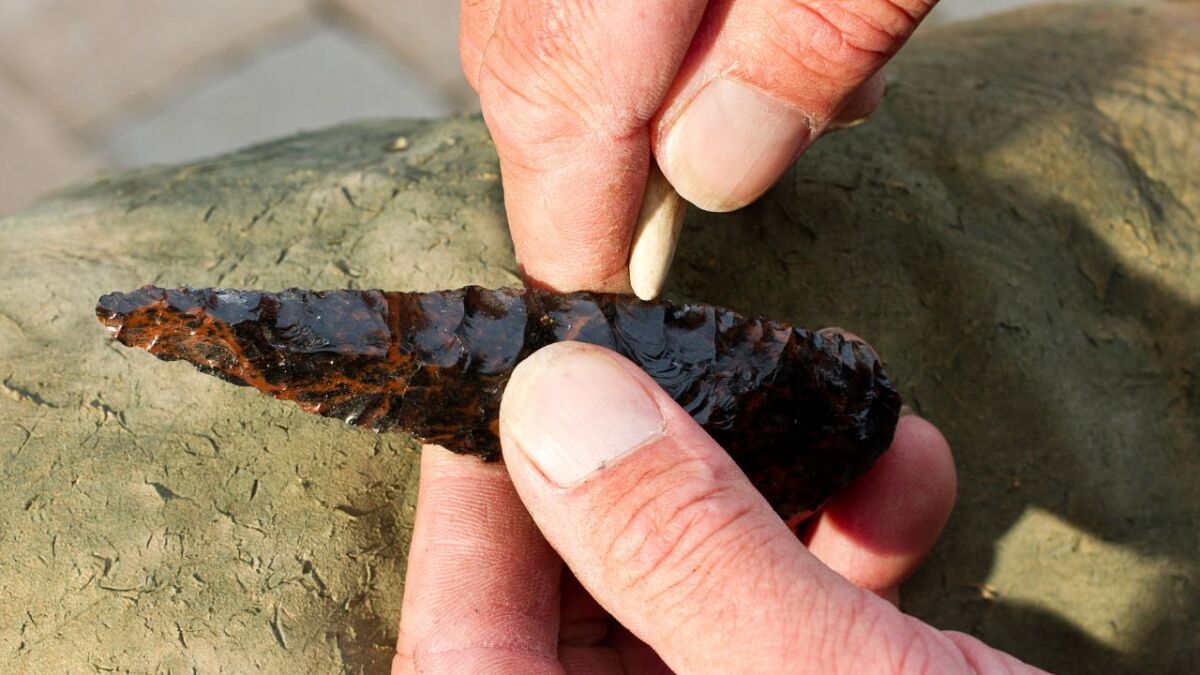
Over time, humans developed specialized techniques to create specific tools such as arrowheads, scrapers, and knives.
Below the image you can see a "copper punch" and the flint, there I am working on a spearhead.
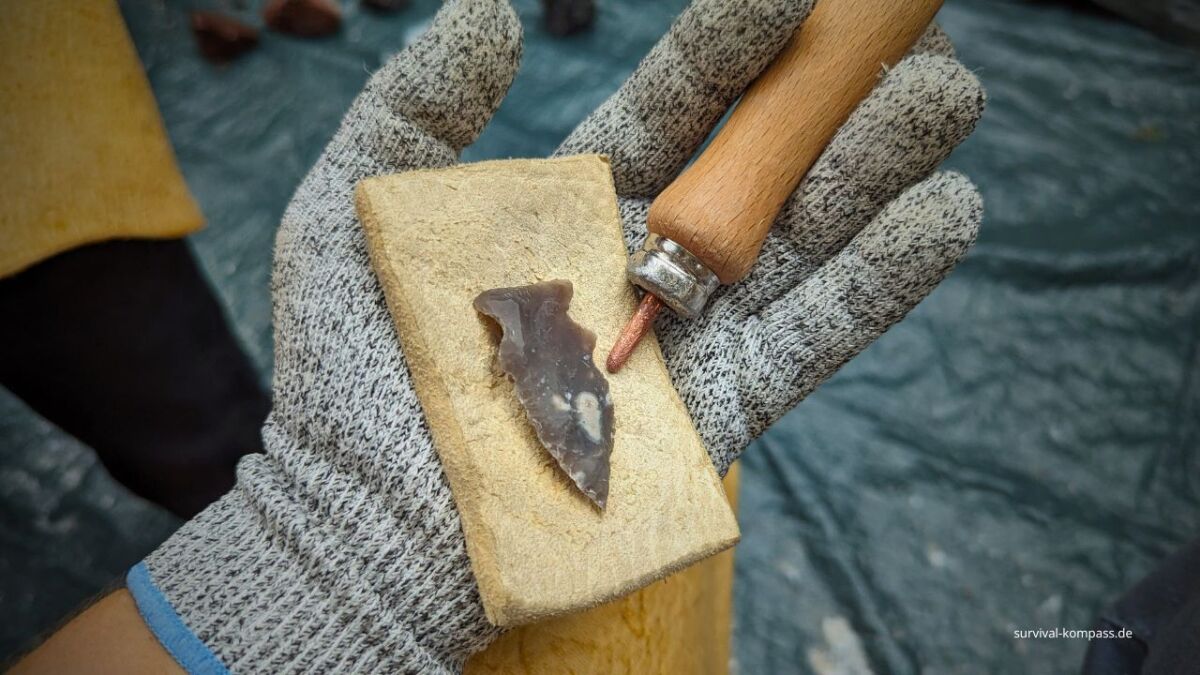
Flint as a commodity
In prehistoric times, flint was not only a tool but also a valuable commodity.
Due to its ability to form sharp edges and generate sparks, it was a sought-after material.
Archaeological finds show that flint was traded over long distances, often across areas where it did not naturally occur.
This trade led to cultural exchange and the spread of techniques and knowledge.
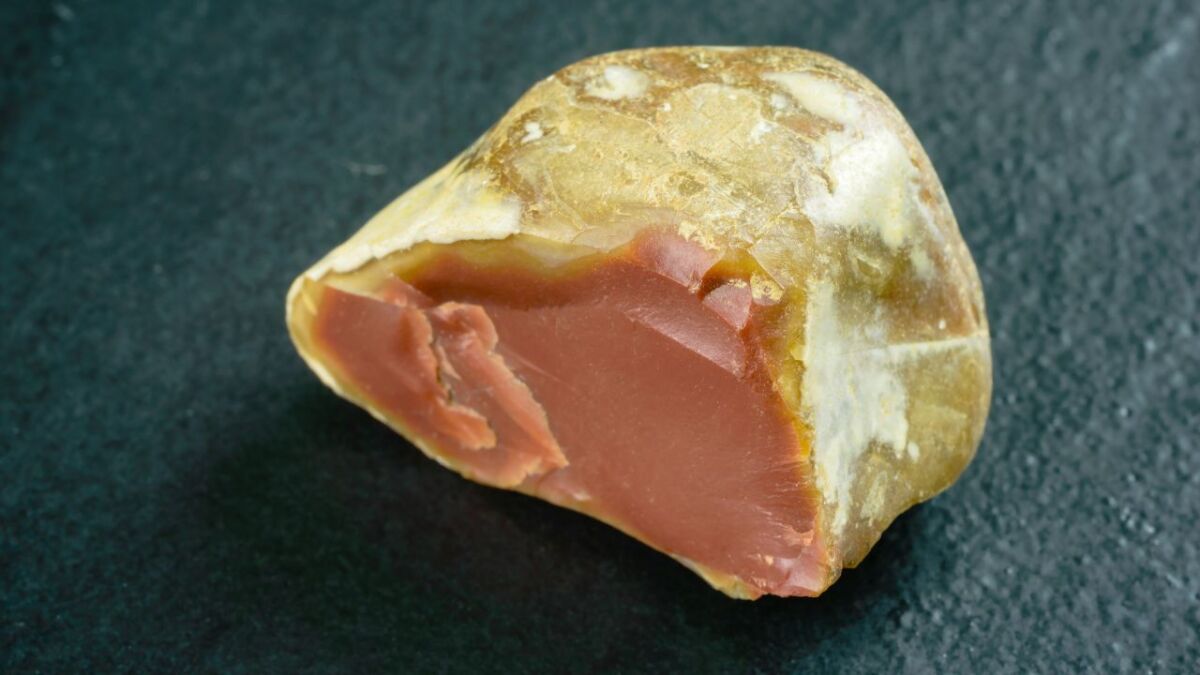
Flint for making fire?
Many people think of the ability to create fire when they hear the word flint. Is that true?
Indeed, sparks can be struck when striking flint against flint.
But with flint alone, you can't actually start a fire.
The spark generated by a flint on a flint does not have enough heat to ignite dry material. These sparks are also called cold sparks.
However, the combination of flint and pyrite, also known as Markasit, works.
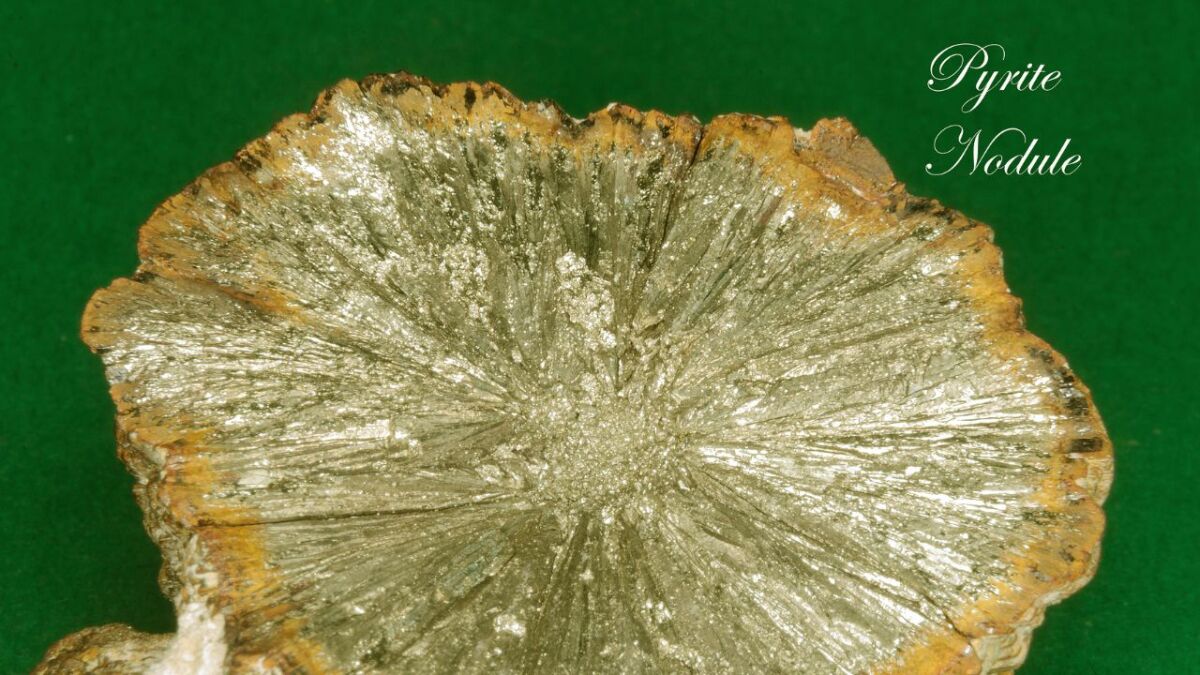
Pyrite is an iron sulfide mineral that is often found in coal seams. When metal and pyrite strike each other, temperatures can reach over 1000 °C - more than enough to ignite tinder.
Our ancestors used this technique to make fire.
You chose a pyrite stone containing sulfur and struck sparks from the pyrite with a flint.
But for this technique, no flint is necessary, it is just recommended because it is hard and sharp-edged. Any other hard and sharp stones can be used for this purpose as well.
With skillful technique, it was possible to ignite a warming campfire even in wind and weather.
It is still a skill that is appreciated today by outdoor enthusiasts and survivalists. However, a carbon-containing striker and flint are used. I have here a detailed video tutorial on this.
Why does a spark occur when striking flint and pyrite/steel?
The spark that is created when striking flint against another hard material (such as pyrite or steel) is the result of a physical and chemical process.
1. Physical process: When flint is struck against a hard material like steel, small particles of the steel (called "sparks") are scraped off by the hard, sharp edge of the flint. These particles are so small and are scraped off at such high speed that they are heated by the friction and pressure of the impact.
2. Chemical Process: The heated steel particles react with the oxygen in the air in a process called oxidation. This leads to the formation of sparks, which are actually glowing particles of oxidized steel. When these sparks come into contact with a flammable material like tinder, they can ignite it and start a fire.
It is important to note that it is not the flint itself that produces sparks, but rather the small steel particles that are separated by the strike of the flint. The flint merely serves as a tool to shear off these particles through its sharp edge and the energy generated by the strike.
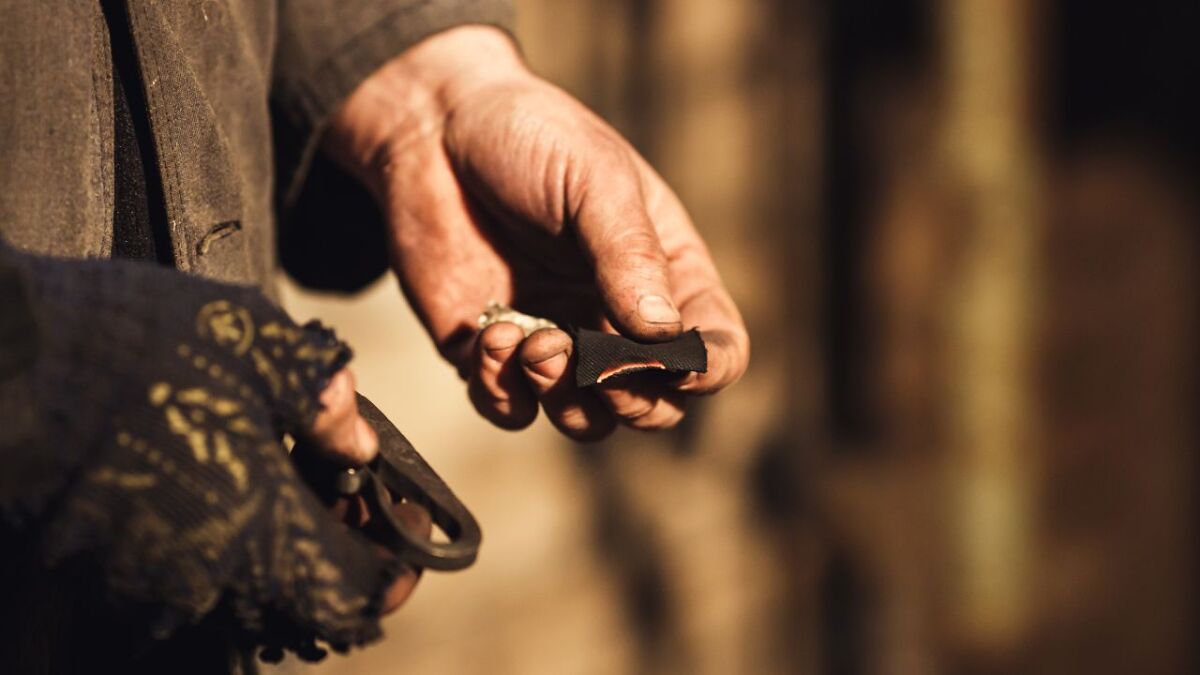
Find a Flint Stone Yourself
Would you like to go flint hunting now?
Here are a few tips to go hunting on your own:
- Search along chalk cliffs or in quarries in chalk rock. Here you have good chances of finding flint.
- Dig in gravel pits and on river banks. Flint is often washed out of sedimentary rock.
- Keep an eye out for nodules of gray, hard rock. These could be flint.
- Break the stone as a test with another hard object. If it splits sharply, you have probably found flint.
With some practice, you will soon get the hang of distinguishing flint from other stones. I wish you good luck in your search.
But please note that flint is a valuable stone, and it is not naturally reproduced on Earth. There is also no way to produce it synthetically. So handle the stones with care.
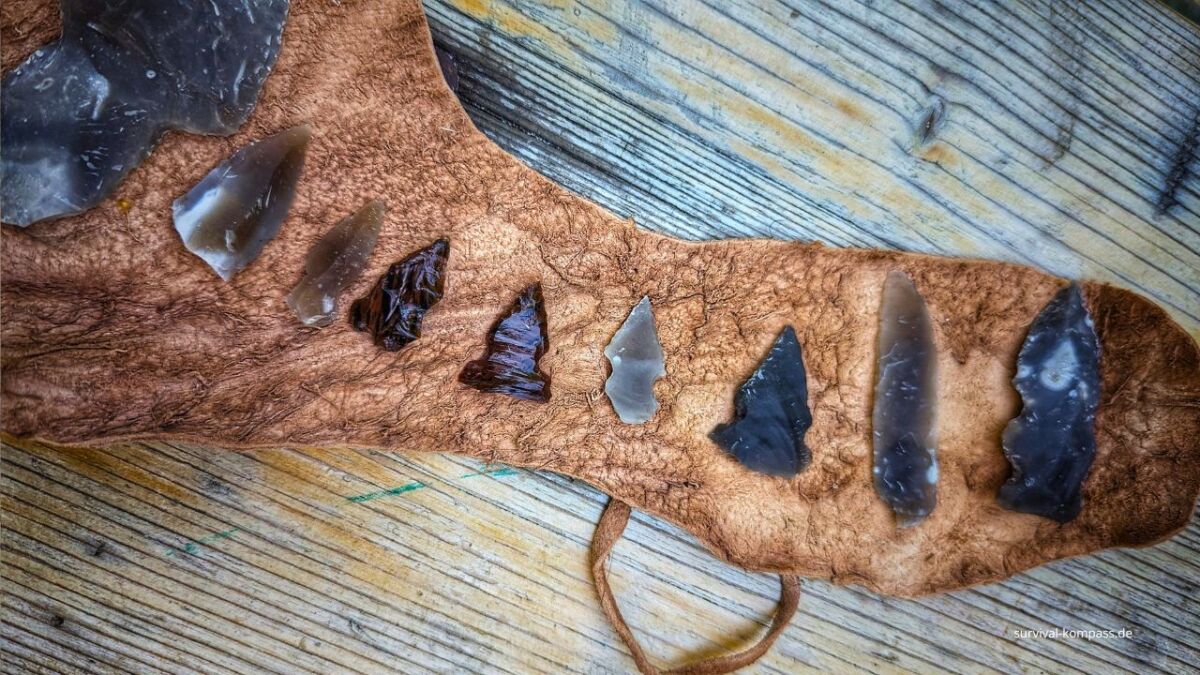
4 exciting facts about Flint
Flint, also known as firestone, is a fascinating rock that has been used by humans for thousands of years.
Here are four fascinating facts about Flint that delve deeper into the subject:
- High Quartz Content: Flint consists almost entirely of quartz, one of the most common minerals in the Earth's crust. This high quartz content makes flint particularly hard and resistant to abrasion. The quartz in flint is microcrystalline, meaning it consists of tiny quartz crystals that are not visible to the naked eye.
- Diverse Color Palette: Although flint is often associated with a gray or black color, it can actually exhibit a wide range of colors. These color variations are often the result of impurities or trace elements in the stone. For example, the presence of organic materials or iron minerals can give flint a brown or yellow hue.
- Brittleness and Chipping: Despite its hardness, flint is brittle, meaning it easily breaks or chips when struck. This property was advantageous for prehistoric people as it allowed them to shape flint into sharp blades or arrowheads. The way flint breaks is predictable and follows certain patterns, making it an ideal material for the production of stone tools.
- A Valuable Trade Commodity in the Stone Age: Flint was not only an important material for tool and weapon production, but also a coveted trade commodity in prehistoric communities. Due to its ability to produce sparks when struck against steel, flint was also an indispensable tool for fire generation. Additionally, in some cultures, particularly beautiful or unique pieces of flint were worn as jewelry or as symbols of status.
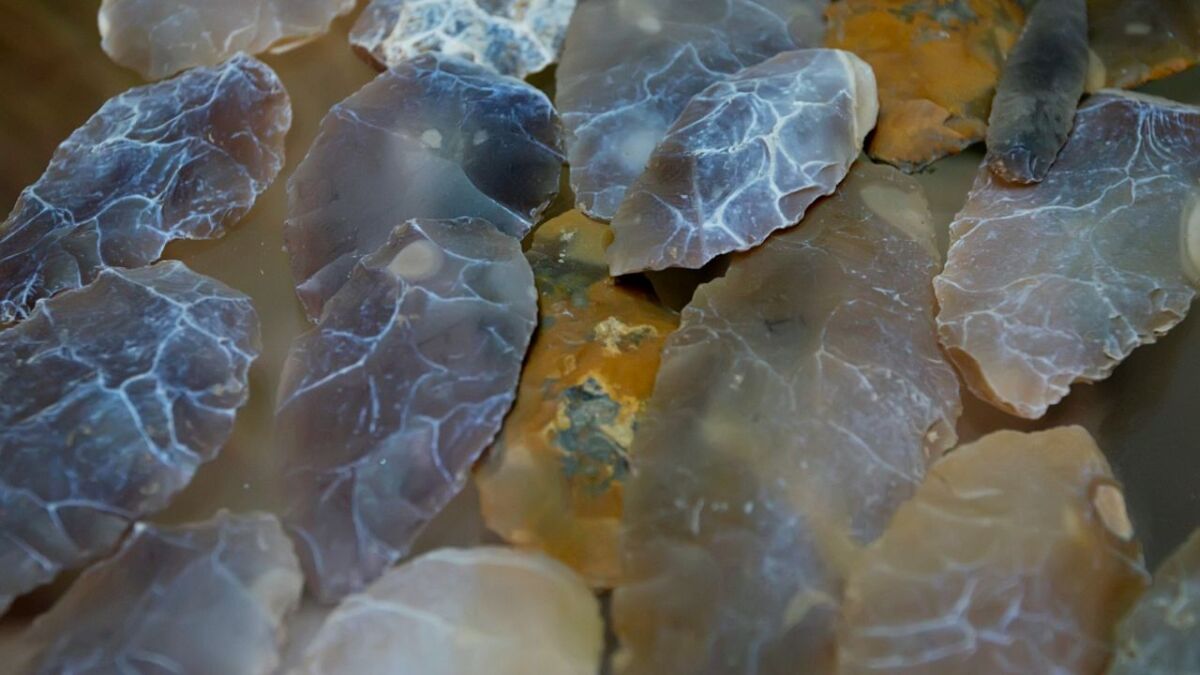
Locations of Flint in Germany and Europe
Here is some information about the locations of flint in Germany and Europe:
In Germany, flint is mainly found in the north and northwest. This is because there used to be shallow sea areas here where flint could form. And the ancient glaciers also pushed the flint here.
Specific locations in Germany:
- In Lower Saxony, there is flint in the Teutoburg Forest as well as on the Swabian and Franconian Alb.
- In Mecklenburg-Vorpommern, flint occurs particularly on Rügen.
- In Brandenburg, there are deposits near Plaue and Premnitz.
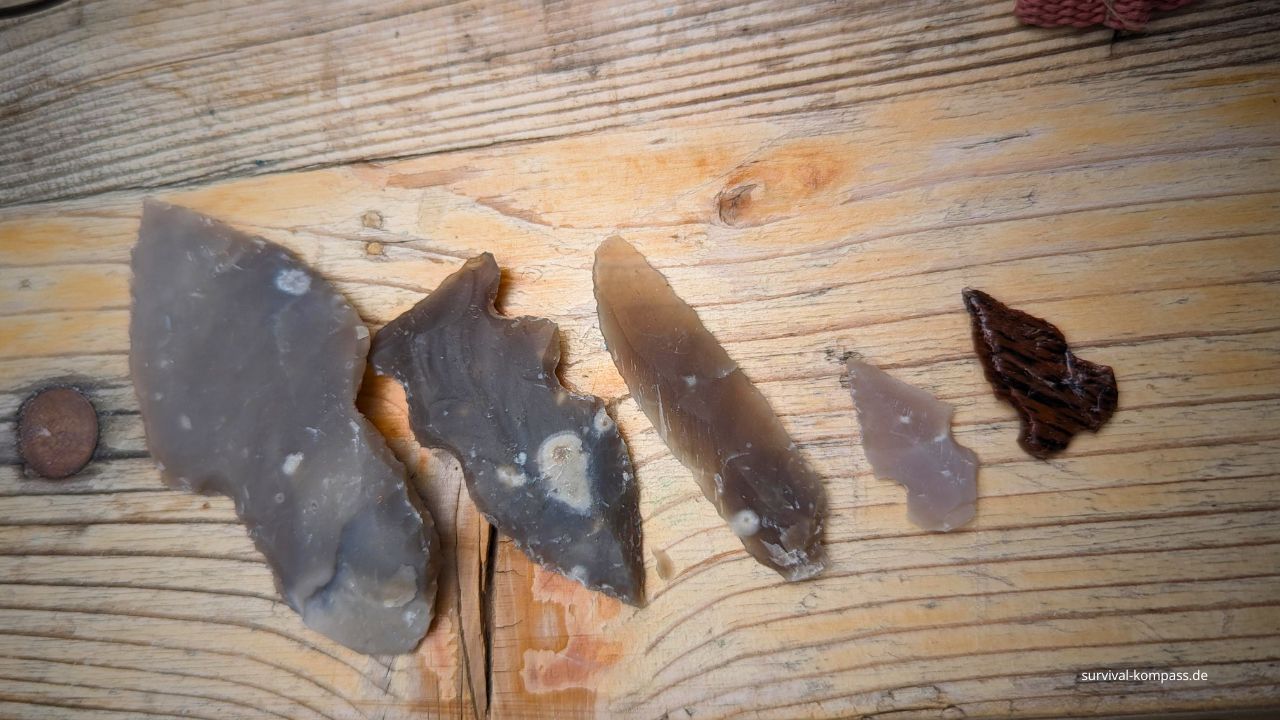
In Europe, there are significant deposits of flint:
- In southern England, the coastal regions of Kent and Sussex.
- In France, the Grand Pressigny region in Touraine.
- In Poland, the Świętokrzyskie Mountains.
- In Russia, the region around Bryansk.
- In Denmark, the islands of Zealand and Møn.
- In Ukraine, the chalk cliffs of the Crimean Peninsula.
Principally, flint can be found wherever shallow seas existed in Earth's history (or where glaciers transported it), in which diatoms sedimented.
So he is mainly found in sedimentary basins and on former seabeds. The aforementioned places are just some particularly productive occurrences in Europe.
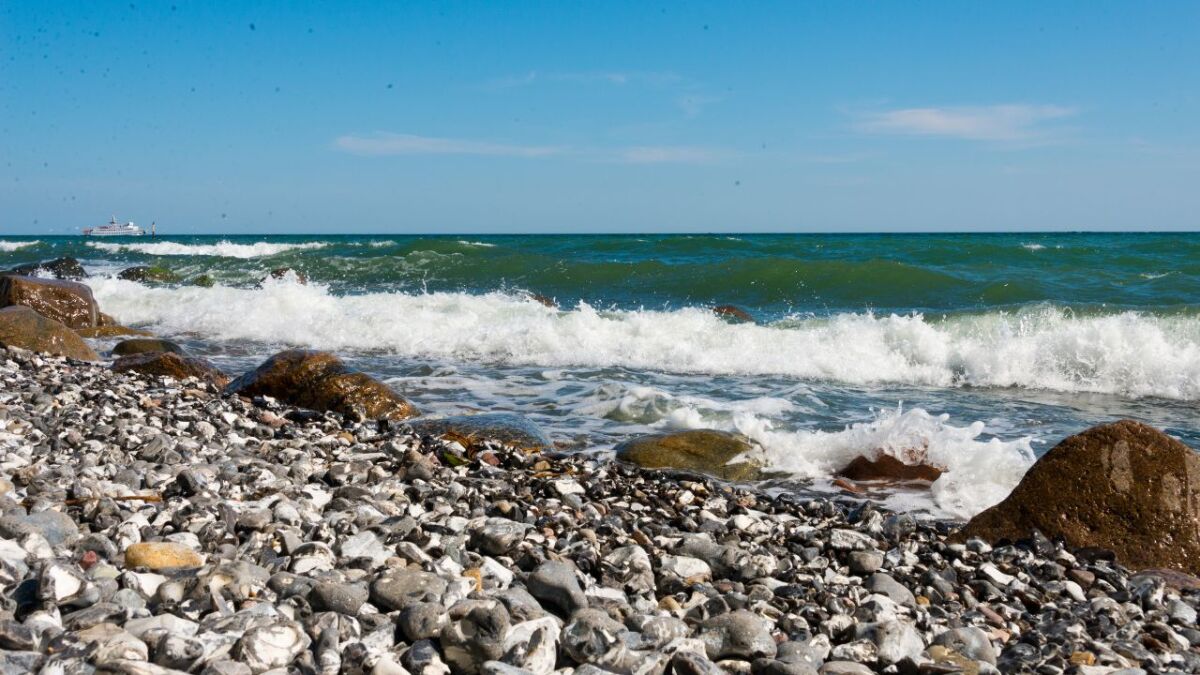
The Flintstone Line
Starting at the North Sea coast in the Netherlands, the German Flint Line extends north of the Teutoburg Forest to the Harz Mountains, Thuringian Basin, Vogtland, Ore Mountains, and further into the Bohemian Mountains.
Here you can see the flint line in Germany:
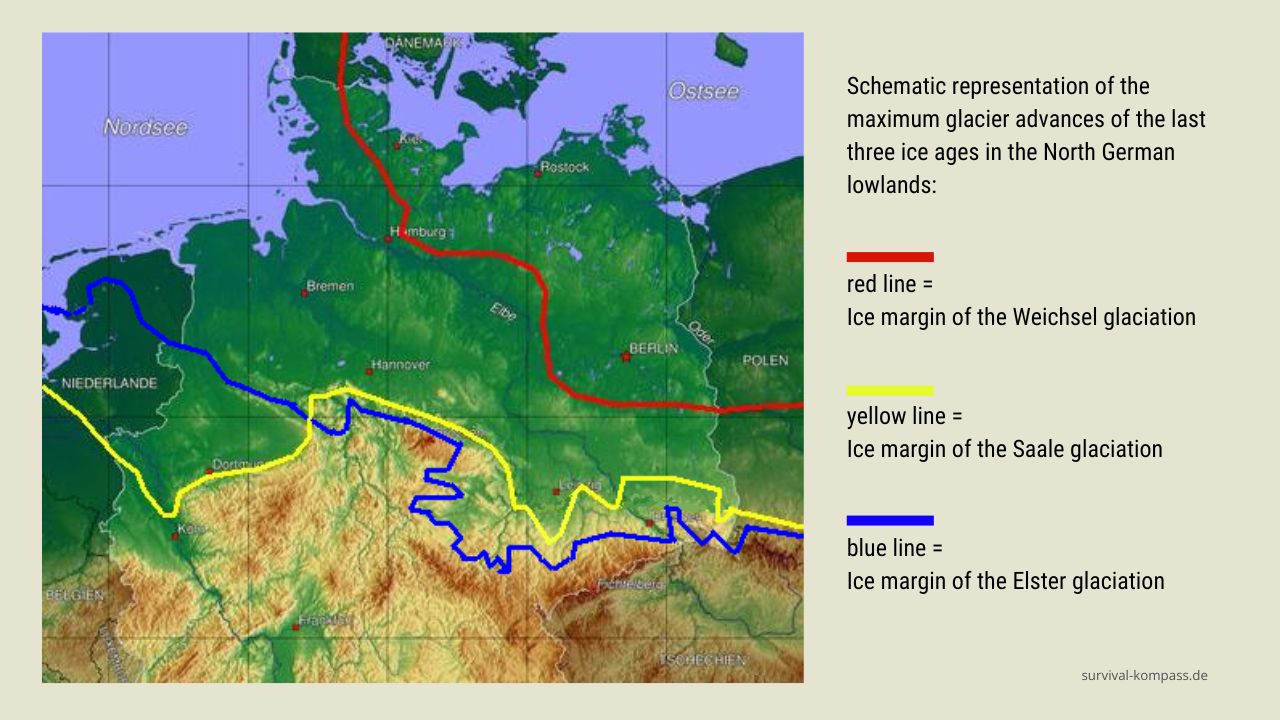
Interesting facts about flint that not everyone knows:
- Flint glows under UV light: Some variants of flint exhibit a characteristic bluish-white fluorescence under UV irradiation. This is caused by impurities of manganese in the flint.
- There is petrified flint: When flint is penetrated by silica, it can transform into chalcedony. This looks like petrified flint and was previously used as a gemstone.
- Flint is a healing stone: In alternative medicine, flint is considered a healing stone for hypertension and the kidneys. However, the scientific evidence for such healing effects is questionable.
- Color varies from location to location: The color of flint depends on impurities. Therefore, flint can vary in color from site to site, ranging from gray, brown, black, yellow, red, and green.
- Flint can produce sparks: While flint alone cannot start a fire, striking steel against flint typically produces sparks. Our word "flint" derives from this property.
- Blades have varying durability: Depending on the structure, the sharpness of a flint blade can last longer or shorter. However, with skillful craftsmanship, very durable blades can be produced.
- Superstitions surrounding flint: In the Middle Ages, flint was considered magical and was believed to ward off witchcraft, poison, and evil spirits. It was also said to make the bearer invisible when held under the arm.
- Oldest flint mining at Grime's Graves: The Neolithic flint mine Grime's Graves in England is over 5000 years old and is considered one of the earliest mining sites in human history.
- Use in firearms: Until the 19th century, flints were used in flintlock firearms to generate sparks for igniting the propellant.
- Flint in mythology: In many cultures, flint is regarded as the origin of fire and was therefore mystically revered. For example, in Greek mythology by Prometheus.
- Jewelry production: Due to its hardness, flint can be easily ground and polished. It has been used to create jewelry such as beads and pendants.
- Counterfeit flint: There have been cases where archaeological flint artifacts were counterfeited to sell them at a higher price. However, experts can identify these forgeries.
- Flint for pet care: Today, special flint rasps and grinding stones made of flint are used for claw care and fur trimming of pets.
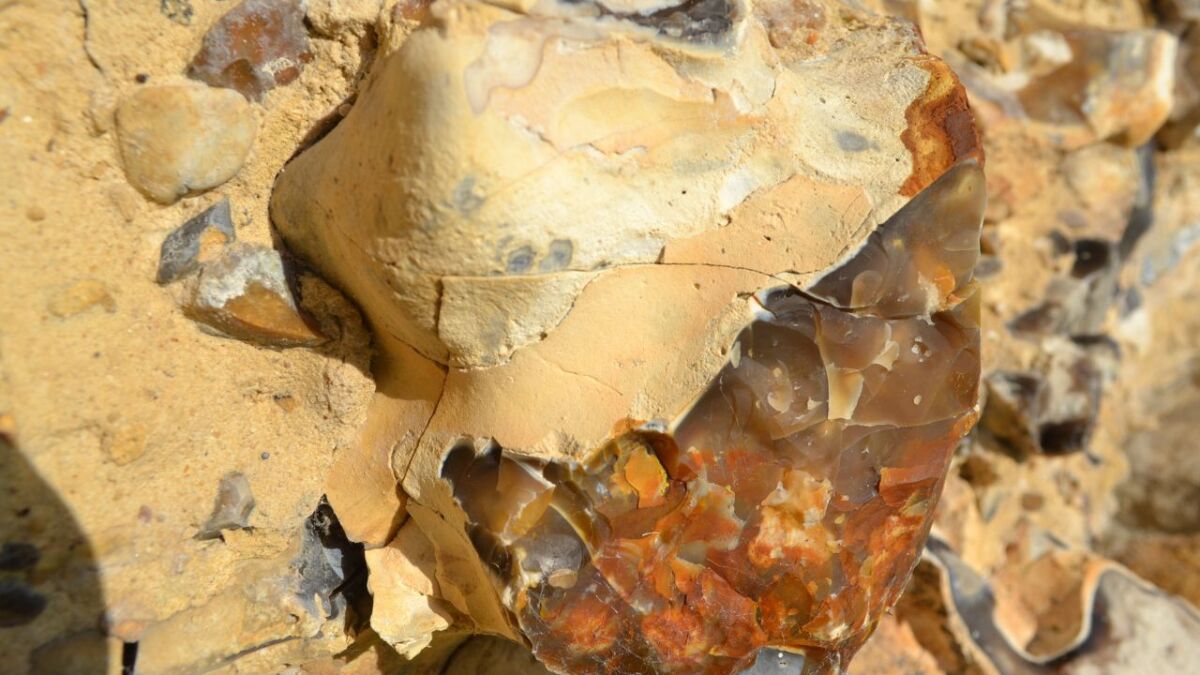
Flint as a remedy
Flint powder is mentioned in various contexts, but there is no clear evidence that it is used as a remedy. Here are some pieces of information from the search results:
- There are reports that among doctors, an aqueous solution of silicon, which can be an antiseptic, is appreciated. (Source)
- In a recipe from ancient Persia, flint powder was mixed with other ingredients such as lead powder, honey, and other additives in toothpaste. (Source)
- In a historical text, it is mentioned that flint powder was used as an ingredient in soap. (Source)
But be careful, I would like to point out that flint splinters and dust can be extremely hazardous to health. Experienced flintknappers always use respiratory protection, work outdoors, or have a ventilation system in their workspace. Fine particles can accumulate in the lungs over time and cause lasting damage.
Flint in modern times
Although flint has largely been replaced by metals and other materials in the modern world, it still holds a special place in culture and history.
Collectors and historians appreciate flint for its beauty and its role in human development.
It is also used in some traditional craft practices, such as nature crafting, and in wilderness schools/survival trainings.
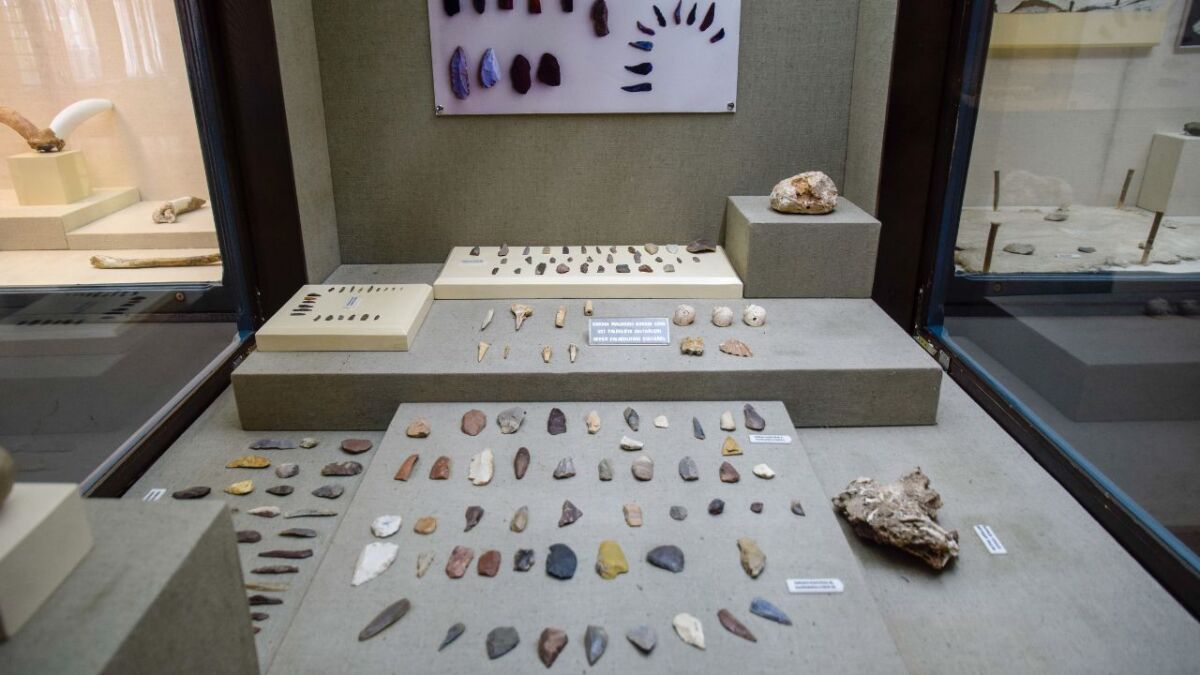
Challenges when working with flint
Although flint is a versatile material, its processing also brings challenges.
It requires patience, skill, and practice to create precise tools and shapes.
A wrong stroke can ruin a valuable piece.
Furthermore, working with sharp stone edges can be dangerous, and safety precautions are essential.
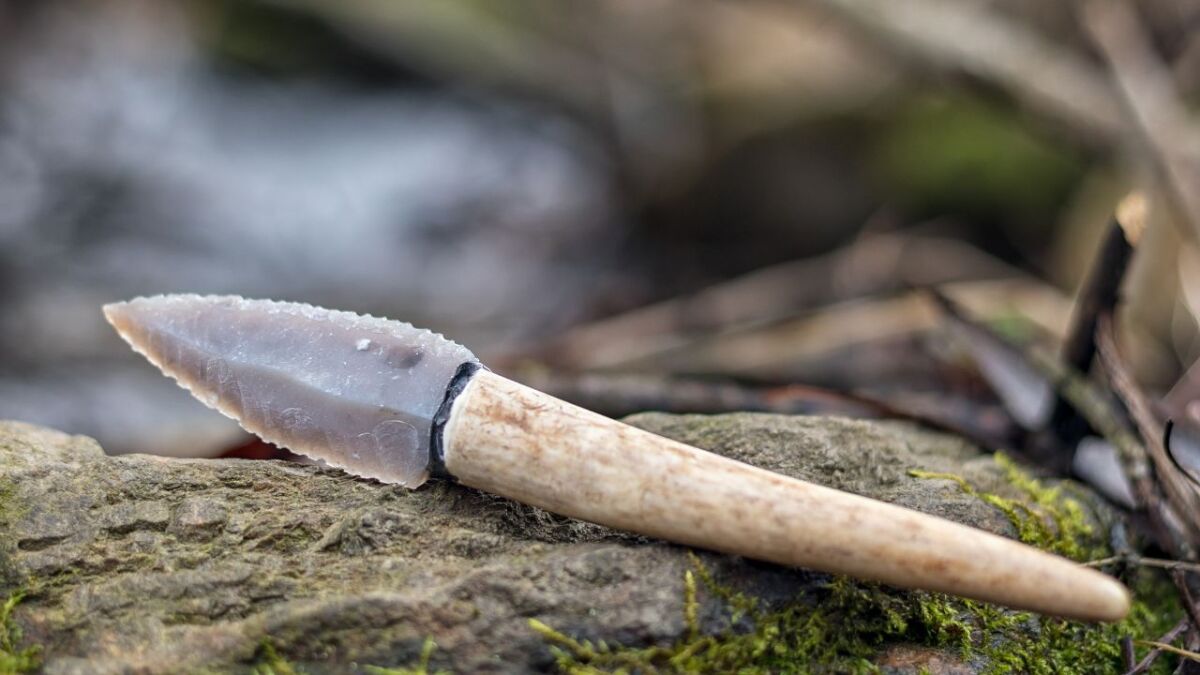
11 Safety Precautions to Help You Work Safely with Flint
If you are working with flint, especially when creating sparks or shaping tools, you should take some safety precautions to protect yourself from injuries:
- Safety goggles: Always wear safety goggles. They protect your eyes from flying stone particles or sparks that can occur when striking the flint.
- Gloves: Put on sturdy gloves, preferably cut-resistant gloves. They protect your hands from cuts caused by sharp edges of the flint or from burns caused by sparks.
- Work area: Choose an open and well-ventilated work area, preferably outdoors. This prevents you from inhaling dust from the chipping process, which contains fine particles that can harm your lungs.
- Fire extinguisher: Always have a fire extinguisher or at least a bucket of water ready in case a spark unexpectedly ignites a fire.
- Stable work surface: Use a stable work surface. This minimizes the risk of accidents caused by tools slipping or tipping over.
- First aid kit: Keep a first aid kit handy to immediately treat minor cuts or injuries.
- Clothing: Wear long sleeves and pants made of tightly woven material to protect your skin. Avoid synthetic clothing as it is easily flammable.
- Shoes: Wear closed-toe shoes, preferably made of leather or another sturdy material.
- Hair and jewelry: If you have long hair, tie it back. Avoid loose-hanging jewelry that could get caught.
- Awareness: Always be attentive and aware of your surroundings and potential hazards. Never work with a flint when you are tired or distracted.
- Training: If you are new to working with flint, consider attending a workshop or course to learn the proper techniques and safety measures.
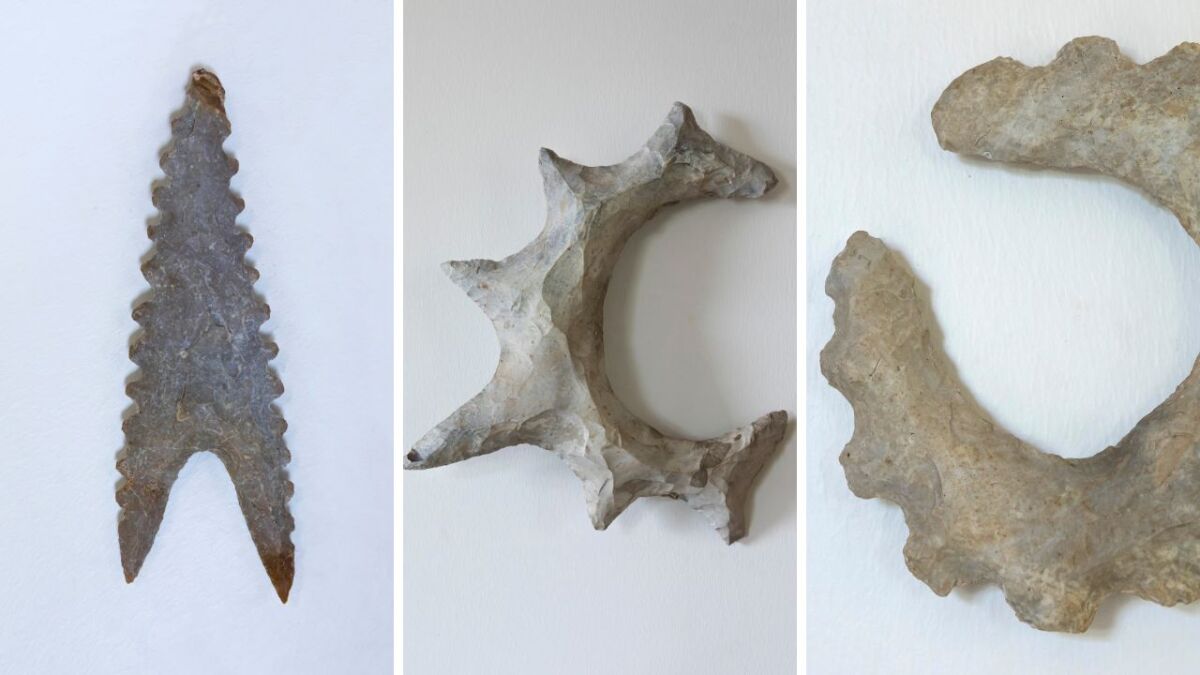
Additional Resources
Here are some interesting resources for anyone who wants to delve deeper into the topic of flint:
Additional Resources
Books German
- Flint, Hühnergötter - What is flint actually? How did it originate? - by Rolf Reinicke
- FLINT CRAFT - by Wulf Hein and Marquardt Lund - fairly new from 2022
- Stone Age Technology: Building huts, making tools, and procuring food like our ancestors
Books English
- Flintknapping - Paul Hellweg
- Flint Knapping: A Guide to Making Your Own Stone Age Toolkit
- Flintknapping: Making and Understanding Stone Tools
- Flintknapping Art: Ancient Tools to Modern Art
Online Communities
- Flintknappers.com - Forum for exchanging ideas for flint enthusiasts
Workshops and Courses in Germany
- Nature Craft 1 Seminar by Wegweiser Wildnis with Klara-Maria Schulke, firestone processing is included
- Processing Firestone at the Nature and Wilderness School Teutoburger Wald
- The Art of Firestone Processing - Flintknapping with Stone Age hunter Werner Pfeifer
- Stone Age Workshop: Making Fire and Tool Production
Museums and Exhibitions
- Grime's Graves - Visit the flint mine in England
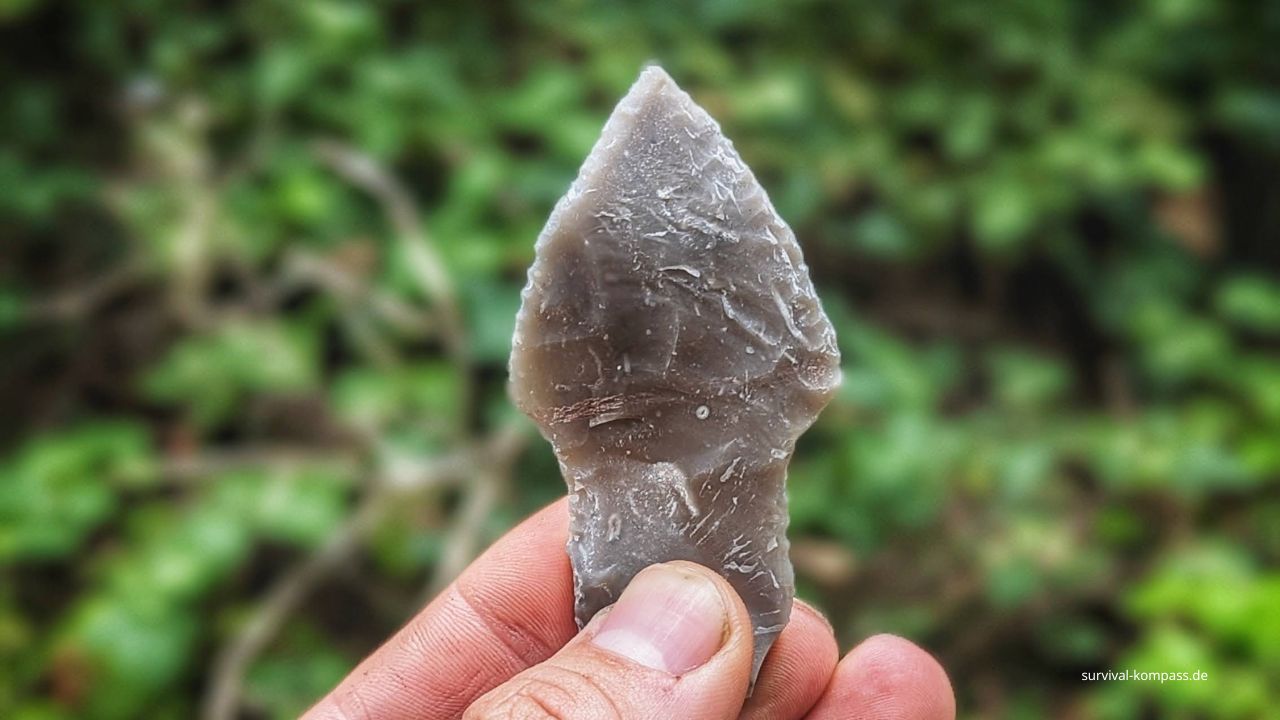
The psychology behind collecting flint
The flint has accompanied humanity since time immemorial.
Without this rock, our distant ancestors would not have been able to create tools and weapons. Even though flint has lost its significance today, it remains a fascinating relic of the past.
Collecting flint goes beyond just collecting stones.
For many, it is a connection to the past, an acknowledgment of the skills and knowledge of our ancestors.
Collecting and working with flint can also be meditative and promote a deep connection to nature. It reminds us that the simplest tools are often the most effective.
I hope I was able to pique your curiosity about this special stone.
Maybe you want to go on a flint search yourself now? Then I wish you exciting finds and many new insights!

Sources for the guide
https://de.wikipedia.org/wiki/Feuerstein
https://www.steine-und-minerale.de/atlas.php?f=3&l=F&name=Feuerstein
https://www.pfahlbau.at/feuerstein/
https://www.mineralienatlas.de/lexikon/index.php/Feuerstein
https://klexikon.zum.de/wiki/Feuerstein
https://www.chemie.de/lexikon/Feuerstein.html

Author of the guide
Martin Gebhardt
Hey, I'm Martin. On my blog, you will learn the basics and numerous details about living in the wild. I think survival, bushcraft and the good life in nature are the keys to happiness. Find me here on Instagram or on YouTube. You can find more about my mission on the About Me page.
Was this guide helpful?
29 people found this guide helpful.
5.00 out of 5 points (29 Ratings)
Comments (0)
This post may contain affiliate links. So if you click on the links and make a purchase, I will receive a small commission at no additional cost to you. Click here, to learn more about it.



